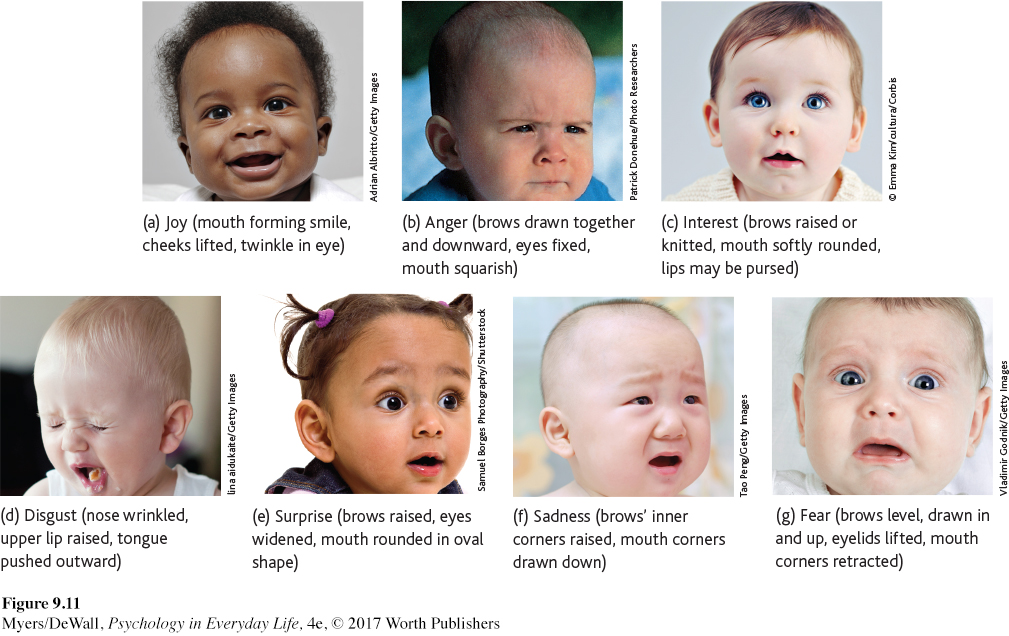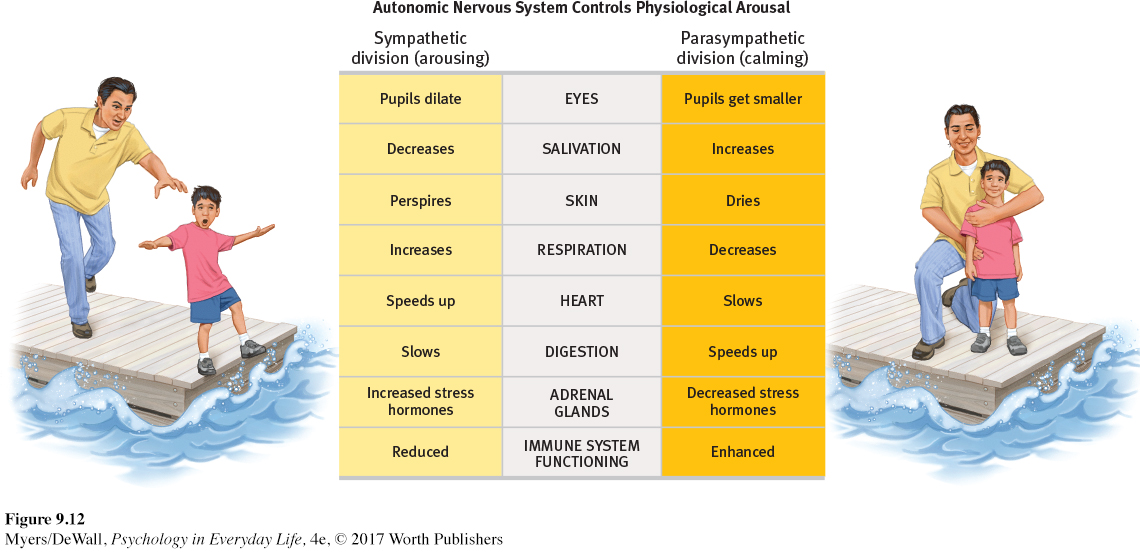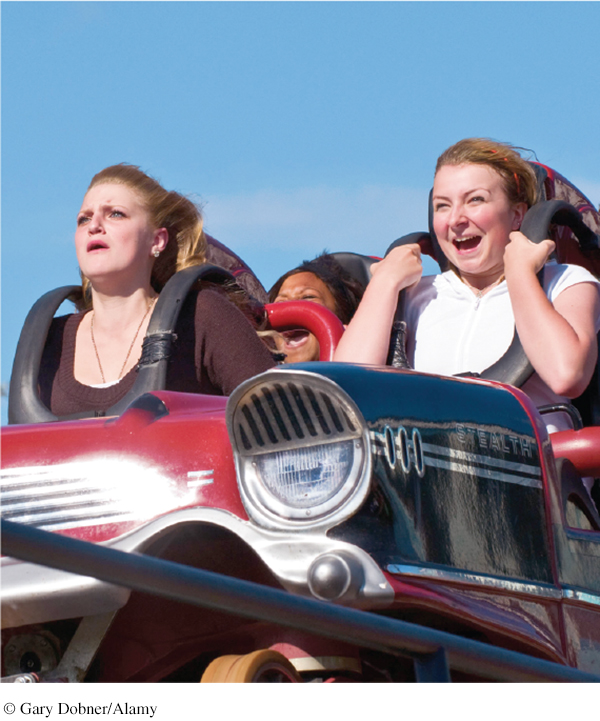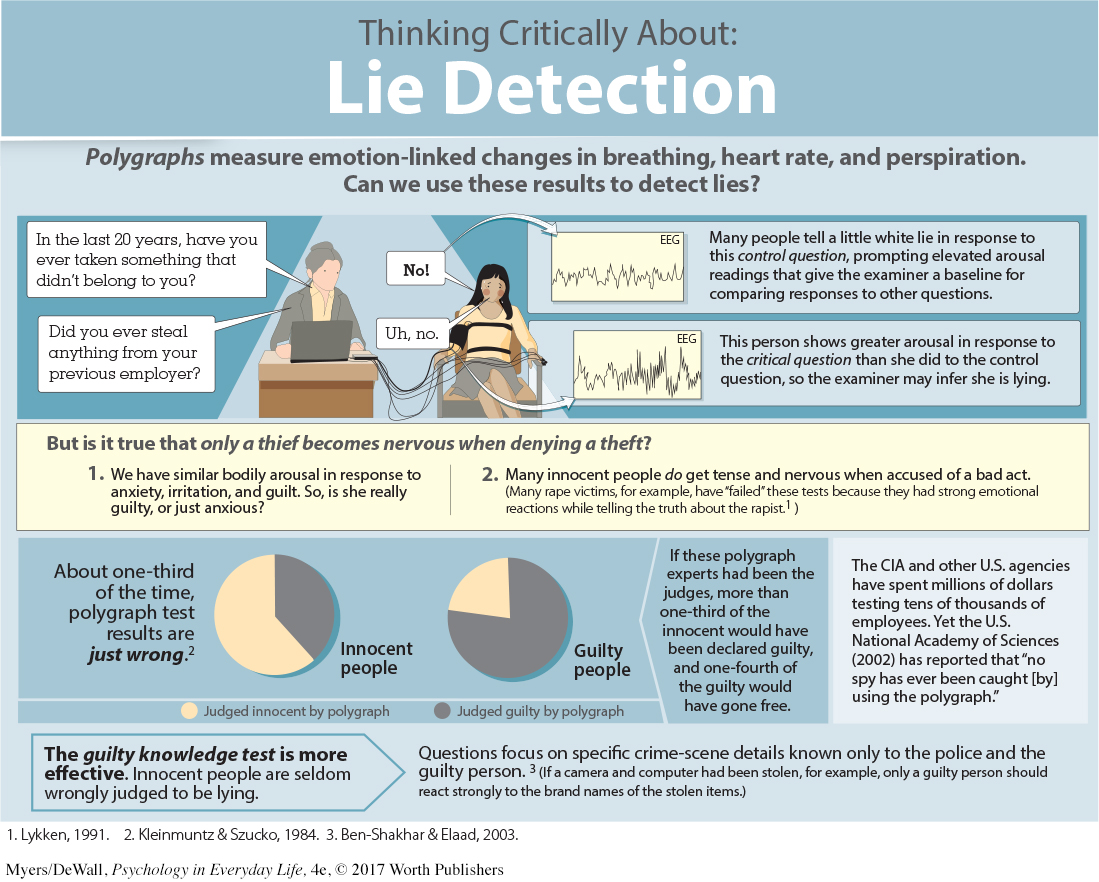9.5 Embodied Emotion
Whether you are falling in love or grieving a loved one’s death, you need little convincing that emotions involve the body. Feeling without a body is like breathing without lungs. Some physical responses are easy to notice; others happen without your awareness. Indeed, many take place at the level of your brain’s neurons.
The Basic Emotions
LOQ 9-
Carroll Izard (1977) isolated 10 basic emotions: joy, interest-

Emotions and the Autonomic Nervous System
LOQ 9-
As we saw in Chapter 2, in a crisis, the sympathetic division of your autonomic nervous system (ANS) mobilizes your body for action (FIGURE 9.12). It triggers your adrenal glands to release stress hormones. To provide energy, your liver pours extra sugar into your bloodstream. To help burn the sugar, your breathing rate increases to supply needed oxygen. Your heart rate and blood pressure increase. Your digestion slows, allowing blood to move away from your internal organs and toward your muscles. With blood sugar driven into the large muscles, running becomes easier. Your pupils open wider, letting in more light. To cool your stirred-

After your next crisis, think of this: Without any conscious effort, your body’s response to danger is wonderfully coordinated and adaptive—
The Physiology of Emotions
LOQ 9-
“No one ever told me that grief felt so much like fear. I am not afraid, but the sensation is like being afraid. The same fluttering in the stomach, the same restlessness, the yawning. I keep on swallowing.”
C. S. Lewis, A Grief Observed, 1961
Imagine conducting an experiment, measuring the body’s responses to different emotions. In each of four rooms, you have someone watching a movie. In the first, the person is viewing a horror show. In the second, the viewer watches an anger-
With training, you could probably pick out the bored viewer. But spotting the bodily differences among fear, anger, and sexual arousal would be much more difficult (Barrett, 2006). Different emotions can share common biological signatures.
Despite similar bodily responses, sexual arousal, fear, and anger feel different to us, and they often look different to others. We may appear “paralyzed with fear” or “ready to explode.”

With the help of sophisticated laboratory tools, researchers have pinpointed some subtle indicators of different emotions (Lench et al., 2011). The finger temperatures and hormone secretions that accompany fear do sometimes differ from those that accompany rage (Ax, 1953; Levenson, 1992). Fear and joy stimulate different facial muscles. During fear, your brow muscles tense. During joy, muscles in your cheeks and under your eyes pull into a smile (Witvliet & Vrana, 1995).
Brain scans and EEGs reveal that some emotions also differ in their brain circuits (Panksepp, 2007). When you experience negative emotions such as disgust, your right frontal cortex is more active than your left frontal cortex. People who are prone to depression, or who have generally negative personalities, also show more activity in their right frontal lobe (Harmon-
When you experience positive moods—
LOQ 9-

polygraph a machine, commonly used in attempts to detect lies, that measures some bodily responses (such as changes in perspiration, heart rate, and breathing) accompanying emotion.
To sum up, we can’t easily see differences in emotions from tracking heart rate, breathing, and perspiration. But facial expressions and brain activity can vary from one emotion to another. So do we, like Pinocchio, give off telltale signs when we lie? Can a lie detector—